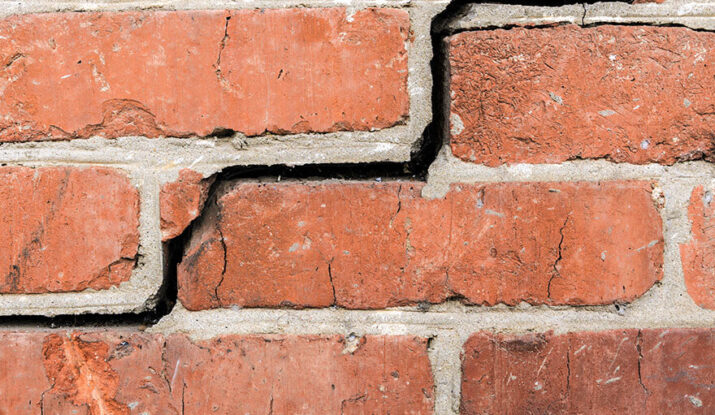Brick homes offer timeless beauty, durability, and charm. But even the strongest materials can show their age, especially in homes built 40+ years ago. If you live in an older home in the GTA, it’s important to recognize early signs of brick deterioration—and know what to do about them.
Here are the top five brick issues we see in older properties, and how to repair them the right way.
1. Cracked or Crumbling Mortar
The problem: Mortar—the “glue” that holds your bricks together—deteriorates faster than the bricks themselves. As it crumbles, water can seep in, leading to deeper structural problems.
The fix:
Repointing or tuckpointing involves removing damaged mortar and carefully replacing it with new, matching material. This not only restores strength but also revives the look of your walls.
2. Brick Spalling (Flaking or Peeling Bricks)
The problem: Spalling is when brick faces begin to flake or peel away. It’s often caused by water infiltration followed by freeze-thaw damage—common in Southern Ontario winters.
The fix: Affected bricks need to be removed and replaced. In some cases, proper drainage and sealing improvements are also needed to stop the cycle.
3. Bulging or Bowed Walls
The problem: When brick walls begin to bow or bulge outward, it may indicate severe structural pressure—sometimes from water damage, rusting wall ties, or foundation shifts.
The fix: This is not a DIY job. A masonry professional will assess the structural integrity and may need to rebuild part of the wall, improve drainage, or add support systems.
4. Efflorescence (White Powder on Brick)
The problem: That white, chalky substance you see? It’s salt deposits left behind when water moves through your bricks and evaporates. While not immediately dangerous, it signals moisture problems.
The fix: Efflorescence can be cleaned off, but the root issue—often trapped moisture or poor drainage—needs to be addressed to prevent recurrence.
5. Brick Discoloration or Staining
The problem: Brickwork that looks blotchy, green, or dark may have been affected by mold, mildew, or mineral buildup. It often occurs in shaded, poorly ventilated areas.
The fix: Gentle professional cleaning (never pressure washing!) combined with correcting the moisture source—like fixing leaks or improving air flow—can restore appearance and function.
How to Protect Your Brickwork for the Long Term
Whether your home is 40 or 140 years old, proactive maintenance is key. Here’s what we recommend:
- Inspect brickwork every spring and fall
- Keep gutters and downspouts clear
- Repoint mortar every 20–30 years, or sooner if needed
- Get professional help for visible cracks, bulging, or water damage
Call in the Experts
At Fadom Construction, we specialize in brick repair and restoration for older homes across Mississauga, Toronto, and the GTA. We’ve helped countless homeowners bring their exteriors back to life—without compromising historical character.
Book a consultation or learn more about our brick restoration services →
Final Thoughts
Bricks are incredibly durable—but they’re not indestructible. Small signs of damage in an older home can escalate quickly without proper care. Understanding the common problems and calling in the right team can save you stress, money, and preserve your home’s beauty for decades to come.

